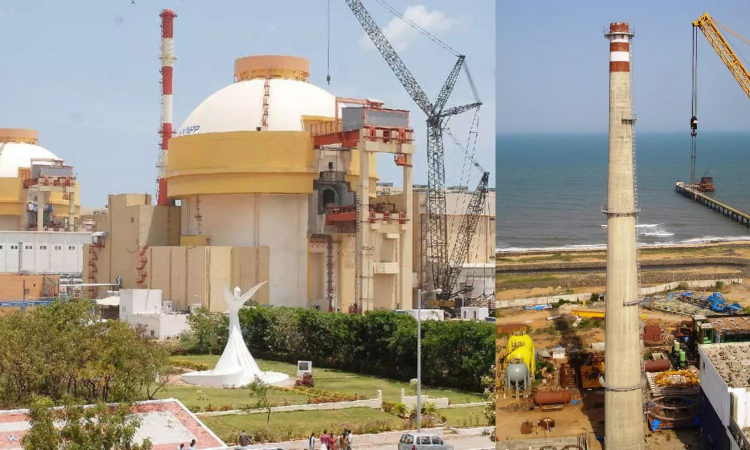 Image Source: DT Next
Image Source: DT Next
India is ready to reach a historic milestone on its nuclear journey with the upcoming completion of its first Prototype Fast Breeder Reactor (PFBR) at Kalpakkam, Tamil Nadu. The 500 MW reactor, under development by Bharatiya Nabhikiya Vidyut Nigam (BHAVINI), has reached the stage of advanced integrated commissioning and is likely to attain its first criticality around 2025–26 and full operational condition by September 2026.
Key Highlights
-
Second Phase of Nuclear Programme: PFBR is the second phase of India's ambitious three-stage nuclear programme that focuses on optimal utilization of fuel and reduced radioactive waste through recycling. This phase is vital for implementing a closed nuclear fuel cycle in the country.
-
Advanced Technology: In contrast to traditional reactors, the PFBR utilizes plutonium-based mixed oxide fuel and has liquid sodium as a coolant. This advanced technology enables the reactor to utilize India's spent fuel from its Pressurised Heavy Water Reactors (PHWRs) fleet, again decreasing nuclear waste and enabling sustainable energy development.
-
National Significance: The initiation of core loading of the PFBR occurred in March 2024, an occasion witnessed by Prime Minister Narendra Modi, highlighting the significance of the project to India's energy security and technological development.
-
Future Expansion: The successful PFBR commissioning is likely to open the doors to more fast breeder reactors and the subsequent induction of thorium-based reactors, taking advantage of India's large thorium reserves in the third phase of the nuclear program.
Wider Impact
Energy Capacity Expansion: Once commissioned, the PFBR will add 500 MW to India's power grid. India has an installed nuclear capacity of 8.18 GW today and aims to achieve 22.48 GW by 2031–32 through ongoing and approved projects. Fast breeder reactors such as the PFBR are expected to contribute a large portion of this growth.
Closed Fuel Cycle: The PFBR's capacity to reprocess spent fuel and produce more fissile material than it uses is at the heart of India's long-term energy vision, lowering the requirement for fresh imports of uranium and facilitating the path towards thorium-based systems.
Safety and Innovation: The reactor has sophisticated passive safety systems, such as a negative void coefficient and various independent shutdown systems, that guarantee strong protection against possible accidents.
What's Next?
The Atomic Energy Department has made plans to finish the PFBR by September 2026 and start building more fast breeder and small modular reactors in the next few years to keep up with India's increasing energy needs. The successful commissioning of the PFBR will be a new dawn for India's nuclear power industry, cementing its position as a world leader in advanced nuclear technology.
Sources: BusinessWorld, The Indian Express, Times of India, Wikipedia, Deccan Herald
Advertisement
Advertisement





